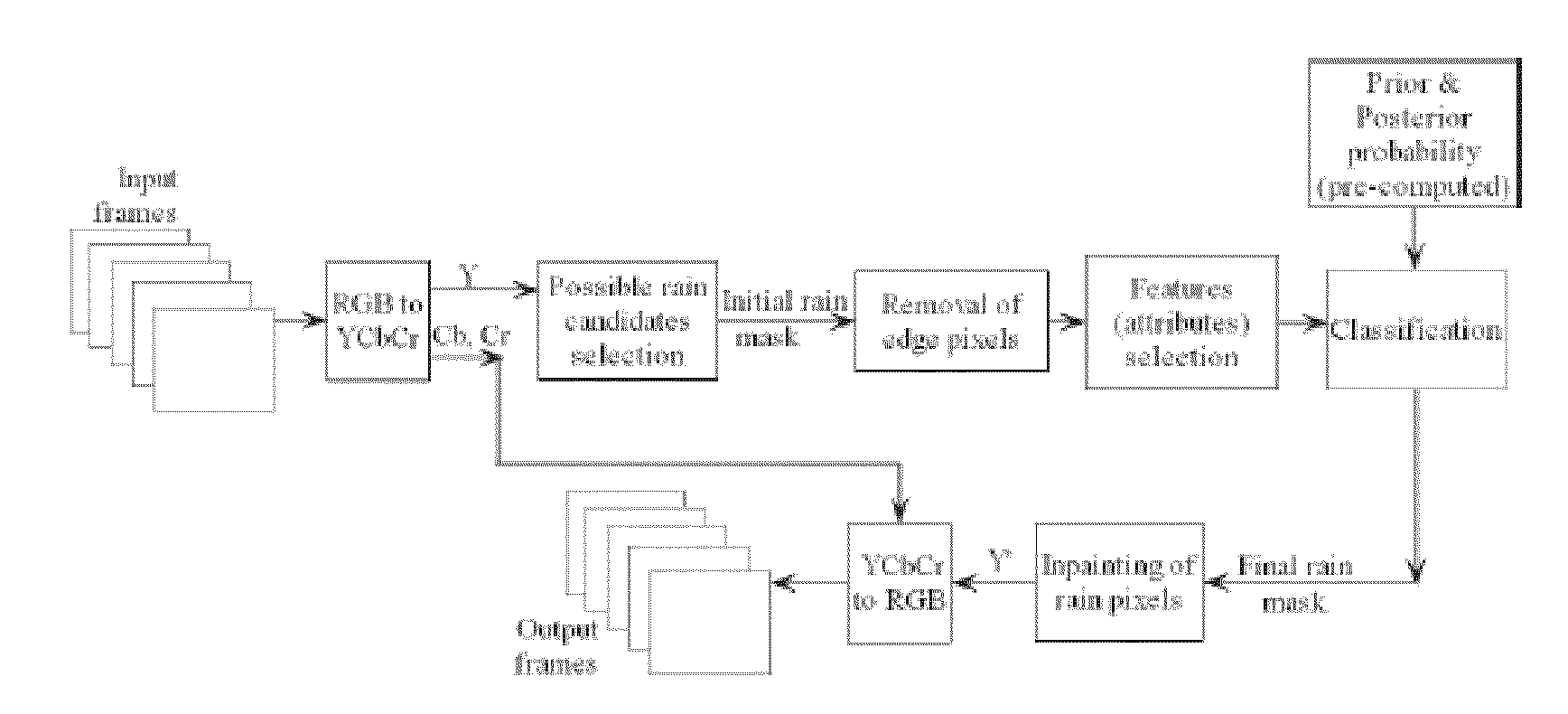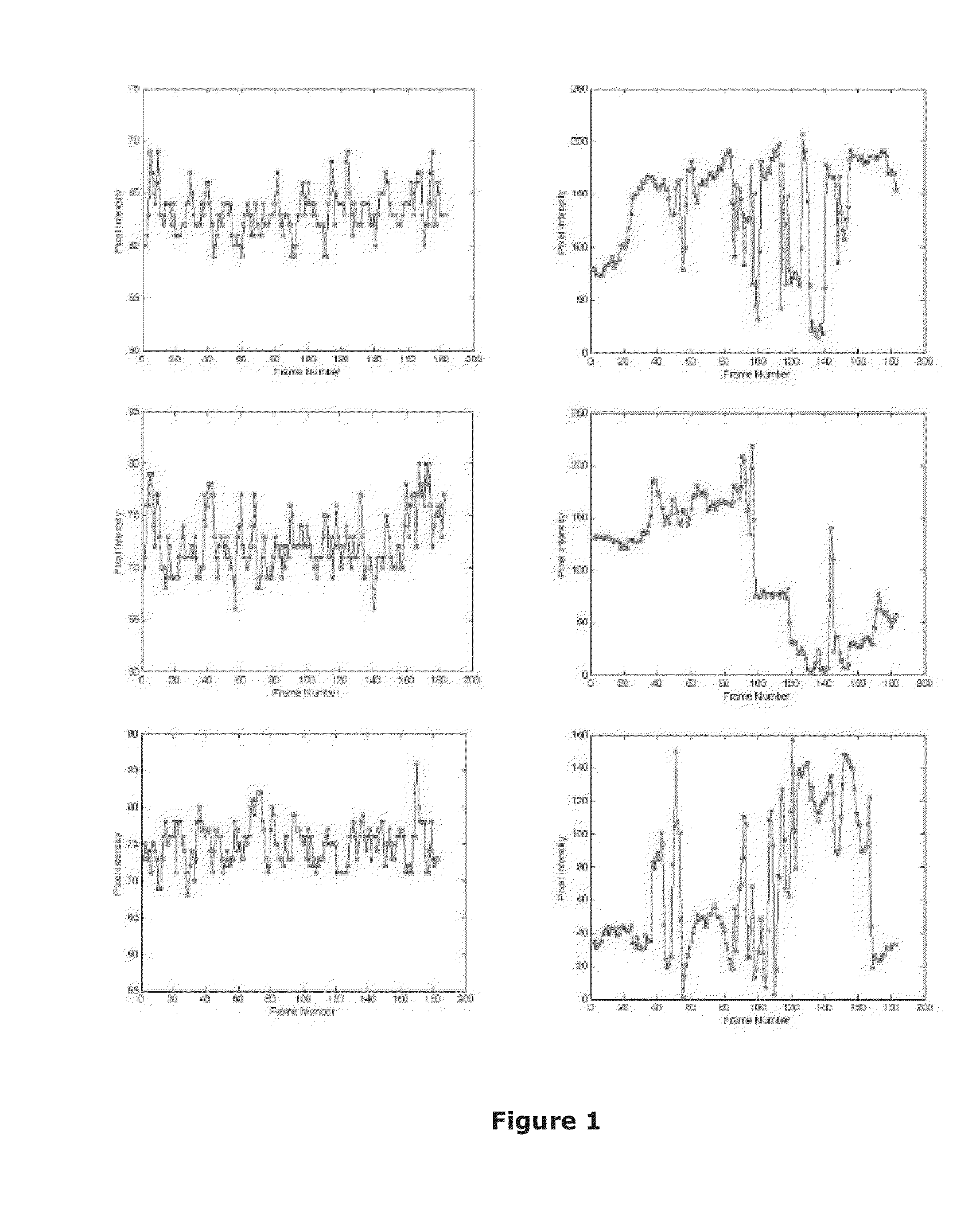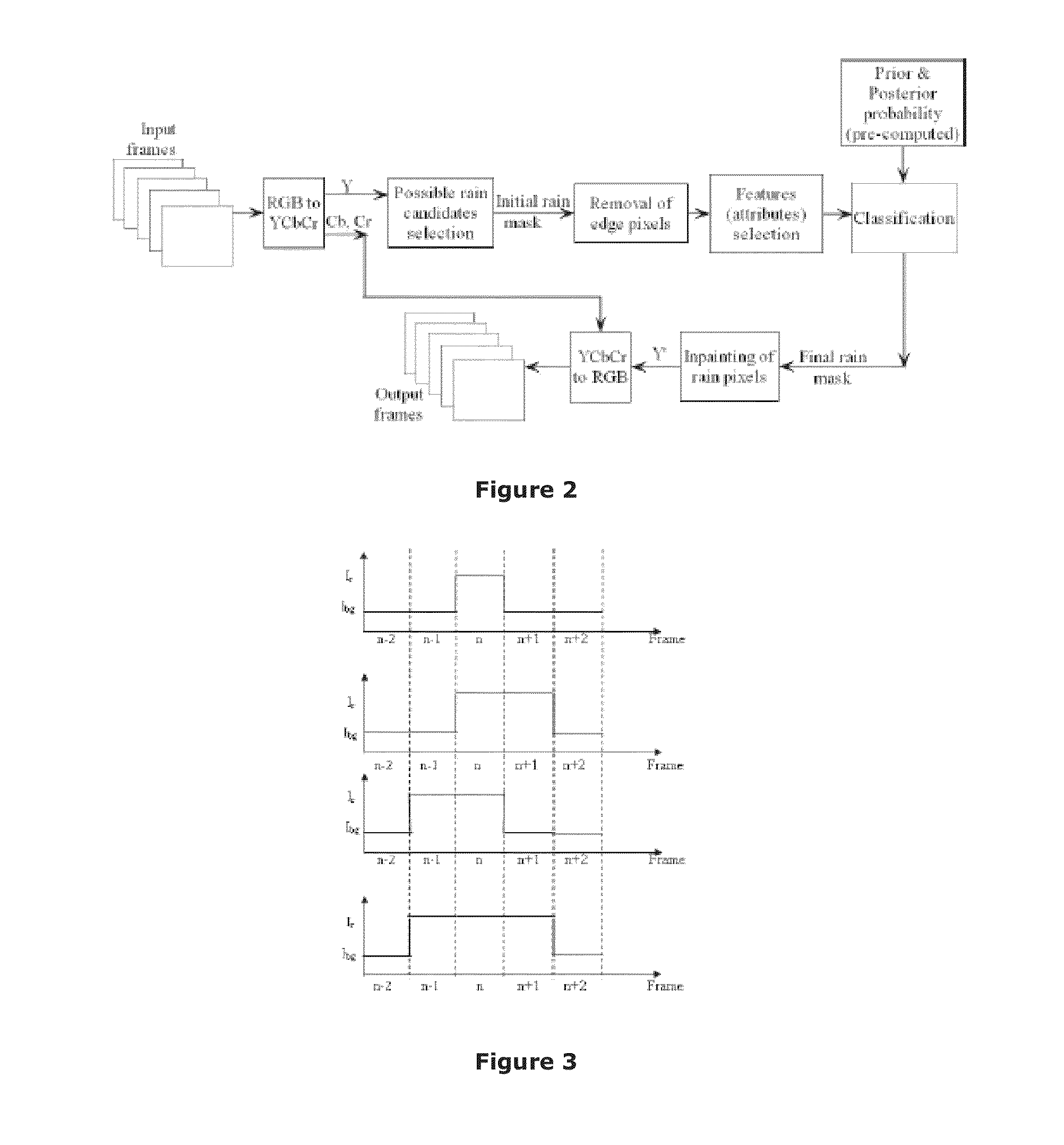Method and Apparatus for Detection and Removal of Rain from Videos using Temporal and Spatiotemporal Properties
a technology of temporal and spatiotemporal properties and video, applied in the field of video rain detection and removal methods, can solve the problems of human viewer, degrade the performance of various computer vision methods, and degrade the perceptual image quality
- Summary
- Abstract
- Description
- Claims
- Application Information
AI Technical Summary
Benefits of technology
Problems solved by technology
Method used
Image
Examples
Embodiment Construction
[0069]Thus according to the present invention there is provided a novel rain removal method. Here to reduce the buffer size and delay of the method, a approach is introduced which uses the temporal / spatiotemporal properties of the rain. Proposed method works on the intensity plane rather than on all three color components, which reduces the complexity and execution time significantly.
[0070]Rain analysis show that rain gives positive fluctuations in the intensity values without affecting the chrominance values. These fluctuations are very small in nature. To analyze the nature of rain, time evolution of pixel variations is exploited. Time evolution of intensity values of a pixel at particular position present in rain region for consecutive frames is quiet different from the evolution of pixel present in moving object region. Intensity waveform for the rain and moving object pixels are shown in FIG. 1. For the rain pixel, intensity values below and above mean are more symmetric than t...
PUM
 Login to View More
Login to View More Abstract
Description
Claims
Application Information
 Login to View More
Login to View More - R&D
- Intellectual Property
- Life Sciences
- Materials
- Tech Scout
- Unparalleled Data Quality
- Higher Quality Content
- 60% Fewer Hallucinations
Browse by: Latest US Patents, China's latest patents, Technical Efficacy Thesaurus, Application Domain, Technology Topic, Popular Technical Reports.
© 2025 PatSnap. All rights reserved.Legal|Privacy policy|Modern Slavery Act Transparency Statement|Sitemap|About US| Contact US: help@patsnap.com



